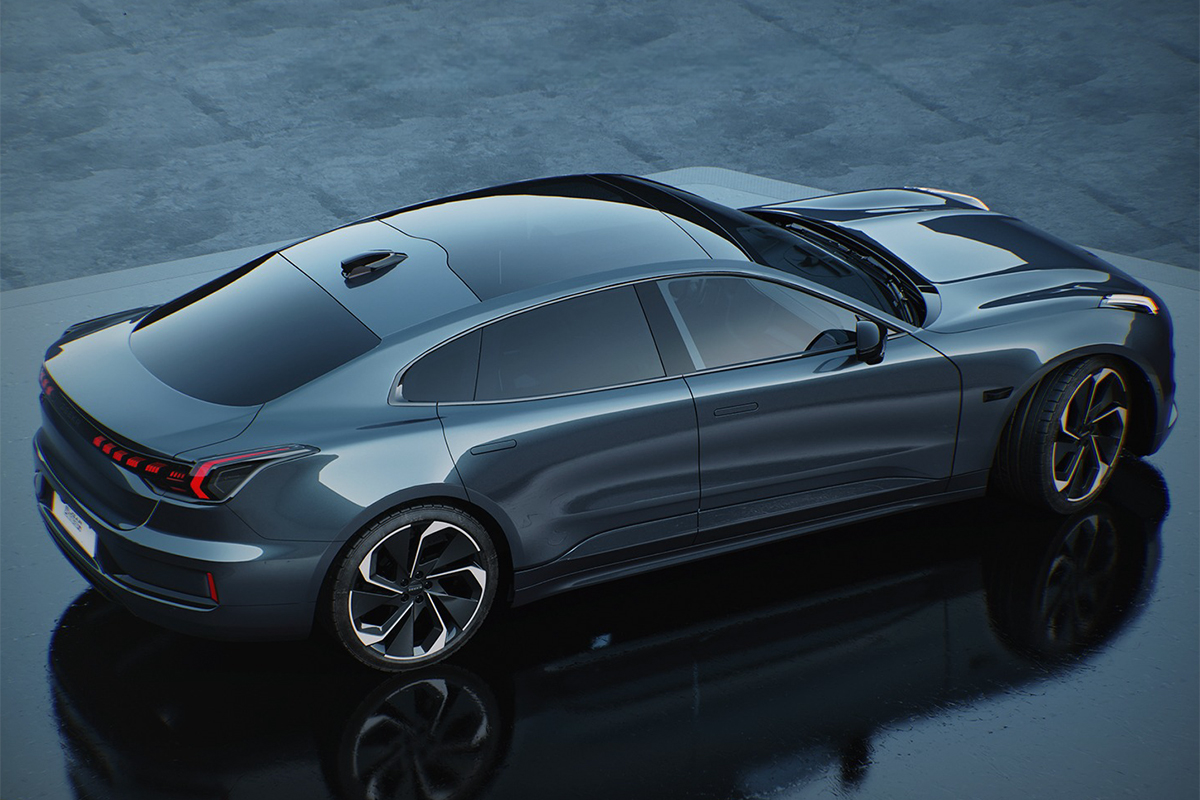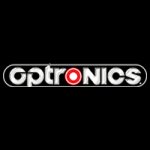Lights crafted for safety and style
Automotive exterior lighting systems are installed on the exterior of a vehicle and collectively contribute to the overall visibility, safety, and communication of a vehicle on the road. The various lights integrated into the vehicle design work together to meet legal requirements and ensure optimal functionality in various driving conditions. Exterior lights, including headlights, taillights, brake lights, and turn signals, are vital for ensuring the vehicle's visibility to other road users. They serve as a means of communication between drivers. These lights enhance the driver's ability to navigate safely in challenging environments and alert other road users to the presence of the vehicle. Exterior lights are integral to a vehicle's design and aesthetics due to their impact on visual identity, signature elements, front and rear-end design, aerodynamics, visual harmony, design consistency, nighttime visual impact, customization options, modern lighting technologies, and their role in shaping brand image and perception. As vehicles continue to incorporate innovative technologies, the role of exterior lighting systems remains pivotal in shaping the future of automotive safety and design.
Types of automotive exterior lights
Automotive exterior lights encompass various types of lights strategically placed on the exterior of a vehicle to fulfill specific functions related to visibility, safety, and communication on the road.
Headlights
Headlights are forward-facing lights located at the front of the vehicle. Their primary function is to provide essential illumination for the driver, enabling visibility and safety, particularly in low-light conditions or at night. By enhancing the driver's ability to see the road ahead, headlights play a vital role in preventing accidents and ensuring the overall safety of both the vehicle occupants and other road users. In essence, headlights are indispensable components contributing to the fundamental aspects of safe and effective driving.
Taillights
Taillights are rear-facing lights located at the back of the vehicle. They serve to make the vehicle visible to other drivers from behind, especially during low-light conditions. Beyond basic illumination, taillights often incorporate additional features such as brake lights, turn signals, and running lights, contributing to both safety and effective communication between drivers. Overall, taillights are integral components that contribute to the overall safety and awareness of vehicles on the road, particularly in situations where visibility is reduced.
Brake lights
Brake lights illuminate when the driver applies the brakes, indicating to following drivers that the vehicle is slowing down or coming to a stop. Brake lights contribute to preventing rear-end collisions. This immediate and visible indication plays a pivotal role in preventing rear-end collisions, as it provides timely information to drivers behind, allowing them to react appropriately. Brake lights are a fundamental safety feature that enhances communication on the road, contributing significantly to overall road safety and accident prevention.
Turn signals
Turn signals are lights that flash to indicate the driver's intention to make a turn or change lanes. Positioned at both the front and rear of the vehicle, these signals play a crucial role in enhancing communication on the road. By providing a clear and standardized indication of the driver's maneuvers, turn signals contribute significantly to the overall safety and coordination of traffic, reducing the likelihood of misunderstandings and promoting a safer driving environment for all road users.
Reverse lights
Reverse lights are activated when the driver shifts the vehicle into reverse gear. Serving as illumination for the area behind the vehicle, these lights play a crucial role in enhancing safety during backing up and parking maneuvers. By providing visibility to the surroundings, reverse lights contribute to preventing collisions and ensuring the driver has a clear view of the rear, making these lights an integral feature for safe and effective vehicle maneuvering in reverse.
Fog lights are low-mounted lights designed to penetrate dense fog, rain, or snow, significantly improving visibility close to the ground. Their purpose is to enhance safety in challenging weather conditions where standard headlights may be less effective. By cutting through adverse weather elements, fog lights play a crucial role in providing clearer visibility for drivers, contributing to safer navigation in conditions with reduced visibility.
Daytime running lights (DRLs) are front-facing lights that activate automatically when a vehicle is in motion during daylight hours. Their primary purpose is to enhance the vehicle's visibility to other road users, providing an added layer of safety even in broad daylight. By increasing the conspicuity of the vehicle, DRLs contribute to accident prevention and overall road safety, aligning with the goal of improving visibility and awareness on the road.
Marker lights
Marker lights are small lights positioned along the sides of the vehicle. Serving as small yet essential components, these lights contribute to making the vehicle more noticeable to other drivers on the road. Moreover, marker lights serve the practical purpose of indicating the overall length of the vehicle, aiding following drivers in assessing the size and dimensions. This dual functionality not only aligns with regulatory standards for nighttime visibility but also promotes safer interactions on the road by providing crucial information about the vehicle's presence and dimensions to fellow road users.
Emergency flashers
Emergency flashers, also known as hazard lights, are lights that simultaneously flash the turn signals on and off. These lights are employed to indicate that the vehicle is in an emergency situation or is parked on the side of the road. By providing a clear and distinctive visual signal, emergency flashers enhance awareness among other road users, alerting them to the presence of a vehicle in distress or a potentially hazardous situation. This contributes to overall road safety by helping prevent accidents and facilitating a prompt response from surrounding drivers.
License plate lights illuminate the license plate on the rear of the vehicle. They are required for legal compliance and contribute to the vehicle's visibility at the rear. Beyond fulfilling regulatory requirements, license plate lights enhance safety by promoting the easy identification of vehicles from behind, contributing to a safer driving environment on the road.
Undercarriage lights
Undercarriage lights are optional decorative lights installed underneath the vehicle. While not essential for safety or visibility, they are popular for enhancing the vehicle's appearance, especially in custom or modified vehicles. Their installation serves as a means to augment the vehicle's appearance, introducing a visually appealing element, especially in low-light conditions. The popularity of undercarriage lights underscores their role in allowing vehicle owners to express individual style and creativity, contributing to the unique and personalized aesthetics of custom or modified vehicles.
Reflectors
Reflectors are passive devices that reflect light, increasing the vehicle's visibility. Positioned at various points, such as the sides and rear, reflectors play a crucial role in promoting safety on the road. While not emitting light themselves, these reflective elements contribute to making the vehicle more conspicuous to other road users, especially in low-light conditions. The incorporation of reflectors aligns with safety standards, aiding in the prevention of accidents by maximizing the vehicle's visibility from different angles.
LED revolution
The continuous evolution of technology is likely to bring further innovations to automotive exterior lighting, with an emphasis on safety, energy efficiency, and aesthetic appeal. The adoption of LEDs in
automotive lighting systems has brought about several advantages and changes across various aspects of vehicle exterior lighting. One of the primary advantages of
LED technology is its energy efficiency. This not only reduces the overall power consumption of the lighting system but also lessens the stresses placed on the vehicle's electrical system. LEDs are solid-state devices that are more resistant to vibrations and shocks, enhancing overall durability. The compactness of LEDs provides greater flexibility in creating innovative and stylish lighting designs. This has led to the development of sleeker and more modern-looking headlamp and taillamp designs, contributing to the overall aesthetics of vehicles. LEDs have high flux density, providing excellent visibility for drivers and enhancing safety on the road. The focused and intense light output of LEDs contributes to improved illumination of the road ahead, making it easier for drivers to see and be seen by other road users. LEDs have virtually no warm-up time, providing instant illumination when activated. This instantaneous on/off capability improves response times for brake lights and turn signals, contributing to quicker communication of the driver's intentions to other road users. LED technology allows for a wide range of
color temperature options. Manufacturers can tune the color of the light emitted by LEDs to enhance visibility, improve contrast, and create distinctive lighting signatures. This flexibility contributes to the customization and styling of
automotive lighting.
Advanced features of LED lighting
LED lights can be integrated into adaptive lighting systems that adjust the direction and intensity of the light based on driving conditions, vehicle speed, and the presence of other vehicles. Adaptive lighting enhances safety by optimizing visibility in various scenarios. They allow the incorporation of dynamic lighting features, such as sequential turn signals, dynamic brake lights, and animated welcome lighting. These features not only enhance functionality but also contribute to the visual appeal of the vehicle. Adaptive lighting systems use sensors and cameras to detect the vehicle's speed, steering, and elevation. They adjust the direction and range of the headlights in real-time, optimizing illumination based on driving conditions. LED technology can be easily integrated with advanced technologies such as sensors, cameras, and control systems. This integration enables
smart lighting functionalities, including automatic high-beam control, lane-keeping assist, and adaptive front-lighting systems. LED automotive lighting systems are becoming more intelligent with features like automatic high-beam control, where the system can switch between high and low beams based on the presence of oncoming vehicles or ambient light conditions.
Matrix LED headlights consist of numerous individual LED pixels that can be controlled independently. This technology allows for more precise and adaptive light distribution without dazzling oncoming traffic.
OLED technology has been increasingly utilized in automotive exterior lighting, providing innovative and customizable lighting solutions. OLEDs differ from LEDs in that they emit light across a surface rather than from a point source, offering unique design possibilities. The thin and flexible nature of
OLED light panels enables designers to incorporate them into various shapes and curves. This flexibility provides greater design freedom, allowing for more creative and unconventional lighting designs compared to traditional light sources. OLED light panels offer uniform and diffused illumination across their surface. This characteristic results in smooth and even lighting patterns, eliminating the need for external reflectors. The homogeneity of illumination contributes to a sleek and modern appearance. OLEDs can be individually controlled, allowing for dynamic and animated lighting sequences. This capability is utilized for functions such as turn signals, brake lights, and welcome lighting, creating eye-catching and visually appealing effects. OLEDs can be selectively illuminated, enabling energy-efficient designs. This means that only specific sections of the OLED panel need to be activated, reducing overall energy consumption. The ability to control individual segments contributes to greater efficiency. OLEDs can be integrated into adaptive lighting systems that adjust the light distribution based on driving conditions. This adaptive capability enhances safety by optimizing visibility in specific scenarios, such as curves, intersections, or varying weather conditions.
V2X integration
The integration of automotive lighting systems into Vehicle-to-Everything (V2X) communication networks represents a significant advancement in the automotive industry. V2X communication enables vehicles to communicate with each other and with various elements in their environment, including infrastructure, pedestrians, and other connected devices. When applied to automotive lighting systems, particularly headlights, it opens up possibilities for enhanced safety and improved communication on the road. Automotive lighting systems, including headlights, are being equipped with communication capabilities to participate in V2X networks. These systems can use dedicated short-range communication (DSRC) or cellular communication protocols to share information with other vehicles and infrastructure. Automotive headlights can communicate information about road conditions to nearby vehicles. For example, if a vehicle encounters adverse weather conditions, a slippery road surface, or other hazards, its headlights can transmit this information to nearby vehicles. This proactive sharing of information can help other drivers adapt to changing conditions and improve overall road safety. The advanced lighting systems can also signal the intention and status of the vehicle. V2X-enabled lighting systems contribute to the development of enhanced safety features. The communication between vehicles helps create a more comprehensive and real-time understanding of the road environment, reducing the risk of collisions and improving overall traffic flow.
Design and aesthetics
Car exterior lights, including headlights, taillights, and other lighting elements, contribute significantly to defining a vehicle's visual identity. The distinct arrangement, shape, and styling of lights create a recognizable and unique appearance for each vehicle model. Headlights are a key component of the front fascia design. The design of headlights influences the vehicle's front-end aesthetics and contributes to the overall character and personality of the vehicle. Many modern vehicles feature signature lighting elements, such as distinctive LED daytime running lights (DRLs) or unique headlight shapes. These signature elements contribute to brand recognition and set the vehicle apart in terms of style. The design of taillights is integral to the rear-end aesthetics of a vehicle. Different shapes, patterns, and lighting configurations of taillights contribute to the vehicle's overall look and can be a defining feature of its rear design. Car exterior lights are integrated into the vehicle's body design with consideration for aerodynamics. Their placement and shape often contribute to the vehicle's streamlined appearance, enhancing both aesthetics and efficiency. Well-designed auto exterior lights contribute to the visual harmony of the vehicle's overall form. They are carefully integrated into the body design to create a cohesive and balanced look that enhances the vehicle's aesthetic appeal.





































